

Homo is the genus of great apes that includes modern humans and species closely related to them. The genus is estimated to be about 2.3 to 2.4 million years old, possibly having evolved from australopithecine ancestors, with the appearance of Homo habilis. Several species, including Australopithecus garhi, Australopithecus sediba, Australopithecus africanus, and Australopithecus afarensis, have been proposed as the direct ancestor of the Homo lineage. These species have morphological features that align them with Homo, but there is no consensus on which gave rise to Homo, assuming it was not an as-yet undiscovered species. Read more ...
Iconic 'Little Foot' fossil may be new type of human ancestor PhysOrg - December 16, 2025
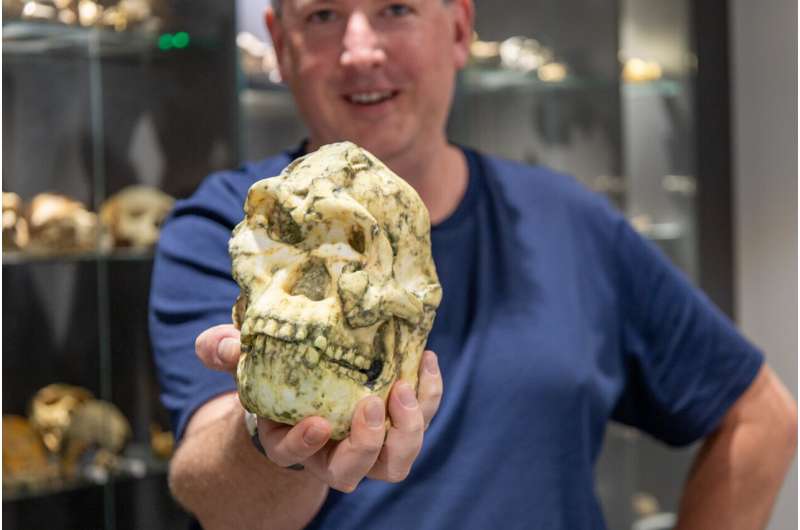
An international study led by researchers from Australia's La Trobe University and the University of Cambridge has challenged the classification of one of the world's most complete human ancestral fossils, raising the possibility of a new human species. The fossil, found in South Africa's Sterkfontein Caves in 1998 and dubbed "Little Foot," has been widely believed to be a member of the Australopithecus genus, a lineage of ape-like upright walkers that lived in South Africa between 3 million and 1.95 million years ago.

'Lucy' Was Neighbors With an Even Older Human Ancestor, Fossils Reveal

A jumble of bones and teeth confirms two species of human ancestor lived side by side over 3.3 million years ago in Ethiopia's Afar Rift. This is the first clear evidence that these ancient relatives may have overlapped not just in time but also coexisted as neighbors, with remains of each species having been found within 5 kilometers (3 miles) of each other.
First Neanderthal Footprints Found on Portugal's Coast Rewrite What We Know About Early Humans

A newly discovered Neanderthal site on Portugal's Algarve coast has revealed the first fossilized footprints of these ancient humans in the region.
Early humans dined on giant sloths and other Ice Age giants, archaeologists find PhysOrg - October 2, 2025
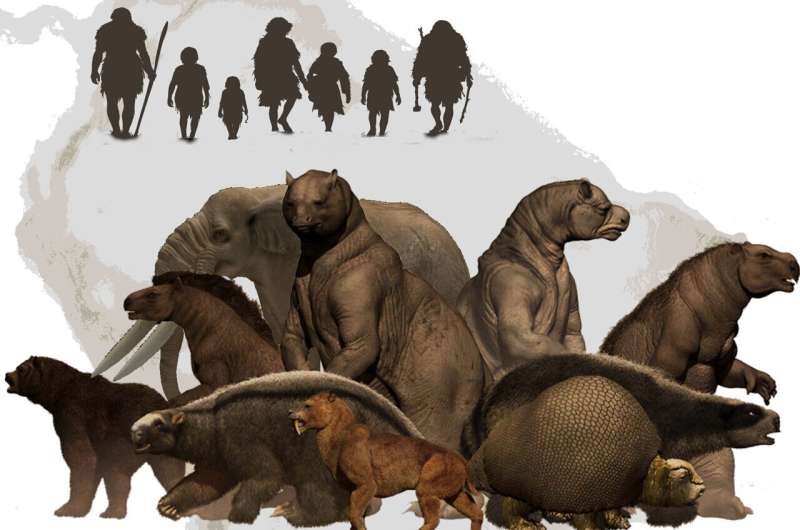
What did early humans like to eat? The answer, according to a team of archaeologists in Argentina, is extinct megafauna, such as giant sloths and giant armadillos. In a study What did early humans like to eat? The answer, according to a team of archaeologists in Argentina, is extinct megafauna, such as giant sloths and giant armadillos. In a study published in the journal Science Advances, researchers demonstrate that these enormous animals were a staple food source for people in southern South America around 13,000 to 11,600 years ago. Their findings may also rewrite our understanding of how these massive creatures became extinct.researchers demonstrate that these enormous animals were a staple food source for people in southern South America around 13,000 to 11,600 years ago. Their findings may also rewrite our understanding of how these massive creatures became extinct.
1 million-year-old skull from China holds clues to the origins of Neanderthals, Denisovans and humans Live Science - September 25, 2025

Researchers have virtually reconstructed a crushed and distorted 1 million-year-old human skull discovered in China. The newly restored cranium may have belonged to a relative of the mysterious Denisovans and provides clues to the rapid evolution of Homo sapiens in Asia.
Ancient fossil discovery in Ethiopia rewrites human origins Science Daily - August 22, 2025
The fossils found in northeastern Ethiopia date between 2.6 to 2.8 million years ago and shed new light on human evolution.
Stunning facial reconstructions of Hobbit, Neanderthal, and Homo Erectus bring human relatives to life Live Science - July 10, 2025

Four lifelike reconstructions of prehistoric humans have been unveiled - including a model of a species often dubbed "the hobbit," which, as an adult, was about the same height as a modern 4-year-old. The 3D models are featured in the upcoming five-part documentary series "Human," which explores the extraordinary story of human evolution over the past 300,000 years, from our rise in Africa, to our migration into Eurasia and across the globe, including to our journey through the Americas after going along the Bering Land Bridge during the last ice age.
Confirmed: New Mexico Footprints Rewrite Timeline of Humans in America Science Alert - June 24, 2025
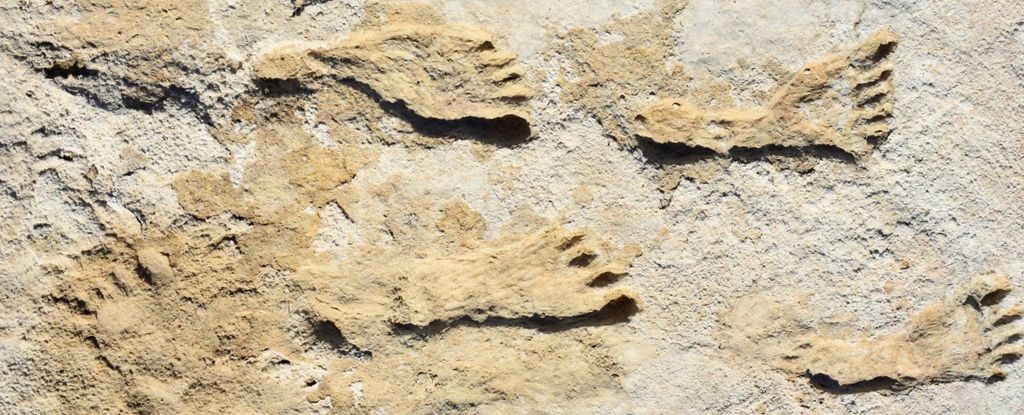
Ancient seas left an expanse of rolling gypsum dunes known as White Sands in New Mexico, and within this surreal landscape lies evidence that humans have roamed the Americas for at least 20,000 years. While most of White Sands is protected as a national park, the US army controls part of it as a missile range. It was within this section that researchers found clay footprints, preserved below the gypsum, that have rewritten the timeline of human presence in the Americas. Previously, we thought humans arrived in North America around 13,200 to 15,500 years ago. A new study combines evidence from mud, Ruppia seeds and pollen found in layers above and below the trace fossils, to date the footprints as being between 20,700 and 22,400 years old.
Researchers studying the remains of a prehistoric woman who lived around 10,500 years ago in what is now Belgium have produced a reconstruction of her face using ancient DNA. CNN - June 19, 2025

A team led by scientists found that the woman would have had blue eyes and slightly lighter skin than most other people from the Mesolithic period in Western Europe who have been analyzed to date
Scientists have determined that a giant skull from an ancient human relative named the "Dragon Man" is actually Denisovan Live Science - June 18, 2025

Scientists first attempted to retrieve an ancient genome from the bones and teeth of the Harbin skull, without success. But they were able to recover some DNA from plaque that had hardened on the teeth and some information on proteins from an inner ear bone. Mitochondrial DNA (mtDNA), which is passed from mother to child, recovered from the skull showed that Dragon Man was related to an early Denisovan group that lived in Siberia from around 217,000 to 106,000 years ago, which means that Denisovans inhabited a large geographical range in Asia, the researchers wrote in the Cell study.
Newly discovered 'ghost' lineage linked to ancient mystery population in Tibet, DNA study finds Live Science - May 30, 2025

A 7,100-year-old skeleton from China has revealed a "ghost" lineage that scientists had only theorized about until now, a new study finds. Researchers made the discovery while studying ancient skeletons that could help them map the diverse genetics of central China. The DNA of this ghost lineage individual, an Early Neolithic woman who was buried at the Xingyi archaeological site in southwestern China's Yunnan province, also holds clues to the origins of Tibetan people.
140,000 year old bones of our ancient ancestors found on sea floor, revealing secrets of extinct human species Live Science - May 27, 2025

Researchers have recovered Homo erectus bones from the seafloor, which points to an unknown hominin population hunting on land that is now underwater in Southeast Asia. Bones from an extinct human ancestor have been recovered from the seafloor, revealing a previously unknown Homo erectus population in Southeast Asia that may have interacted with more modern humans, new studies find
Compelling evidence that Neanderthal and Homo sapiens engaged in cultural exchange PhysOrg - March 11, 2025

The first-ever published research on Tinshemet Cave reveals that Neanderthals and Homo sapiens in the mid-Middle Paleolithic Levant not only coexisted but actively interacted, sharing technology, lifestyles, and burial customs. These interactions fostered cultural exchange, social complexity, and behavioral innovations, such as formal burial practices and the symbolic use of ocher for decoration.
Homo Juluensis the 'Large Head People' - Mysterious New Form of Ancient Human Emerges Science Alert - December 2, 2024
This group of ancient humans - cousins of the Denisovans and Neanderthals - once lived alongside Homo sapiens in eastern Asia more than 100,000 years ago Researchers have identified a new species of ancient humans, which they have named Homo juluensis, meaning "big head," based partly on a very large skull found in China. But what is this new species, and how does it help paleoanthropologists understand hominin variation in the Middle Pleistocene epoch about 300,000 to 50,000 years ago?
After our H. sapiens ancestors evolved roughly 300,000 years ago, they quickly spread out of Africa and into Europe and Asia. For decades, paleo-anthropologists have tried to figure out how hominins were evolving prior to the arrival of modern humans, particularly between about 700,000 and 300,000 years ago, when multiple other early humans existed. For instance, anthropologists have found fossils from species like H. heidelbergensis in western Europe and Homo longi in central China, though not everyone agreed each of these represented a separate species. These fossils have also been lumped into catch-all terms like "archaic H. sapiens" and "Middle Pleistocene Homo," and are sometimes informally called "the muddle in the Middle."
Humans were living near West Papua at least 55,000 years ago Live Science - August 27, 2024
In the deep human past, highly skilled seafarers made daring crossings from Asia to the Pacific Islands. It was a migration of global importance that shaped the distribution of our species - Homo sapiens - across the planet. These mariners became the ancestors of people who live in the region today, from West Papua to Aotearoa New Zealand.
45,000-Year-Old Tools And Bones Reveal Earliest Evidence of Homo Sapiens in Eastern Asia Science Alert - January 18, 2024
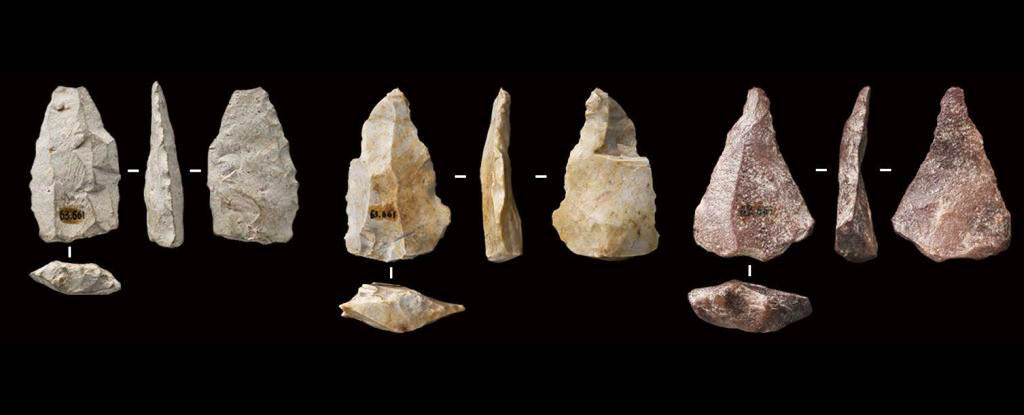
Fragments of ancient rock and bone in Eastern Asia are changing our understanding of the history of human migration. They're artifacts found in the Shiyu site of northeastern China, and new analysis has revealed that they were created by Homo sapiens some 45,000 years ago.
This Is The Face Of "Dragon Man", Modern Humans' Closest Relative IFL Science - November 30, 2023
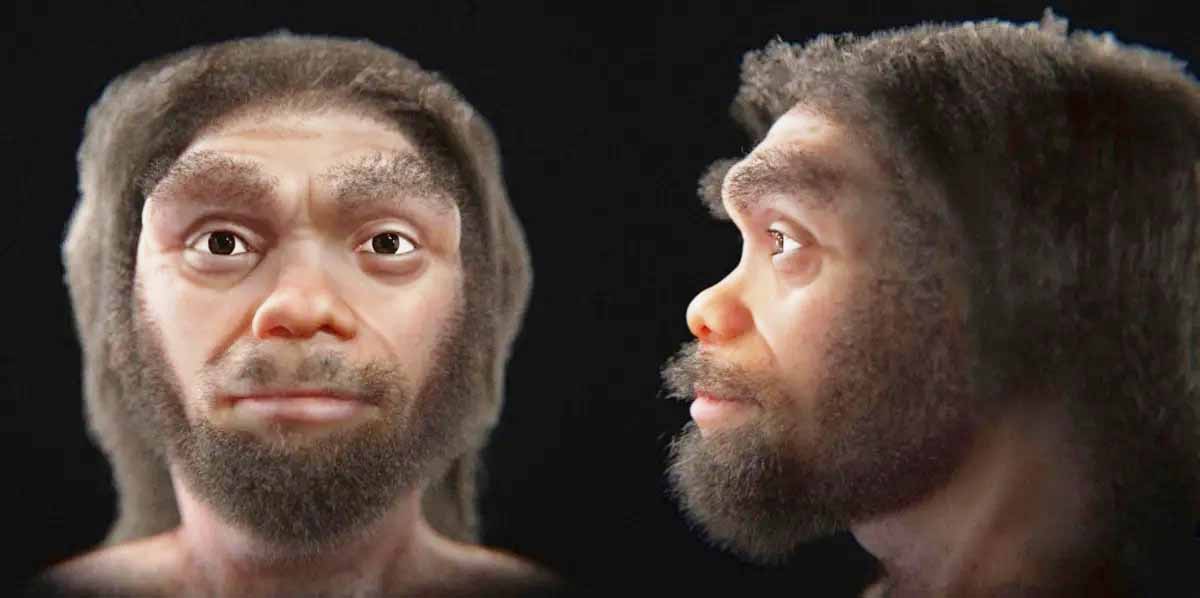
Homo longi lived at the same time as Neanderthals, Denisovans and modern humans.
The limestone spheroids of 'Ubeidiya: Intentional imposition of symmetric geometry by early hominins? PhysOrg - September 6, 2023

Limestone spheroids, enigmatic lithic artifacts from the ancient past, have perplexed archaeologists for years. While they span from the Oldowan to the Middle Paleolithic, the purpose behind their creation remains a subject of intense debate.
Largest-ever genetic family tree reconstructed for Neolithic people in France using ancient DNA Live Science - August 9, 2023
Researchers created two extensive Neolithic family trees using ancient DNA. Using ancient DNA, archaeologists in France have pieced together two elaborate Neolithic family trees that span multiple generations, making them the largest ancestral human record ever reconstructed. The family trees are based on a 6,700-year-old funerary site known as Gurgy, which is located in the Paris Basin region of northern France. Researchers excavated the site in the mid-2000s but, due to advancements in obtaining and analyzing ancient DNA data, recently began studying the genomes of 94 of the 128 individuals, which included children and adults, whose remains were recovered from the site.
Ancient Skull Found in China Is Unlike Any Human Seen Before Science Alert - August 7, 2023
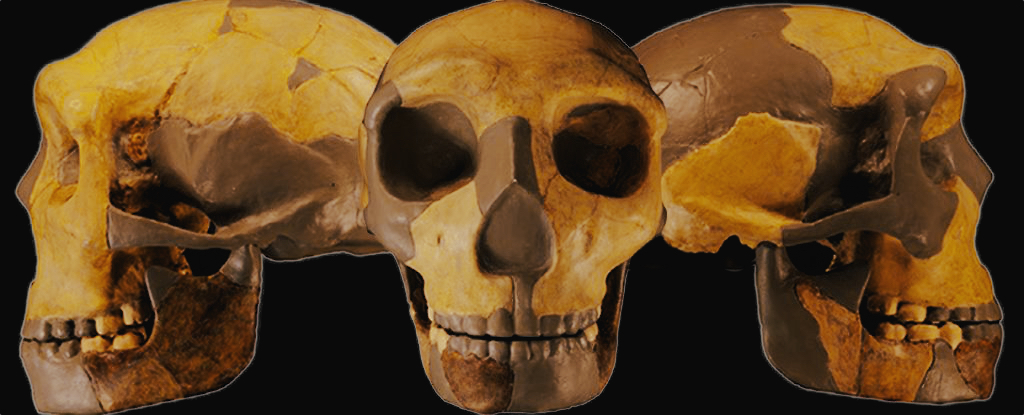
It resembles neither the lineage that split to form Neanderthals, nor Denisovans, nor us, suggesting our current version of the human family tree needs another branch.
45,000-Year-Old Baby In Neanderthal Cave In France Belonged To Unknown Human Lineage IFL Science - August 7, 2023
See stunning likeness of Zlaty kun woman, the oldest modern human to be genetically sequenced Live Science - July 31, 2023
In 1950, archaeologists discovered a severed skull buried deep inside a cave system in Czechia (the Czech Republic). Because the skull was split in half, researchers concluded that the skeletal remains were of two separate individuals. However, through genome sequencing done decades later, scientists concluded that the skull actually belonged to a single person: a woman who lived 45,000 years ago. Researchers named her the Zlaty kun woman or "golden horse" in Czech, in a nod to a hill above the cave system. Further analysis of her DNA revealed that her genome carried roughly 3% Neanderthal ancestry, that she was part of a population of early modern humans who likely mated with Neanderthals and that her genome was the oldest modern human genome ever to be sequenced.
Ancient DNA From Neolithic Tomb Reveals The World's Oldest Family Tree IFL Science - July 25, 2023
A 5,700-year-old tomb has been found to contain five generations of one family, buried over the course of a century. The find provides unprecedented insight into kinship networks in Britain shortly after the introduction of farming – even the bodies' placement reveals much about how society was structured at the time.
Ancient 'Outsider' Human Species Pinpointed in Oldest Genetic Study Yet Science Alert - July 14, 2023
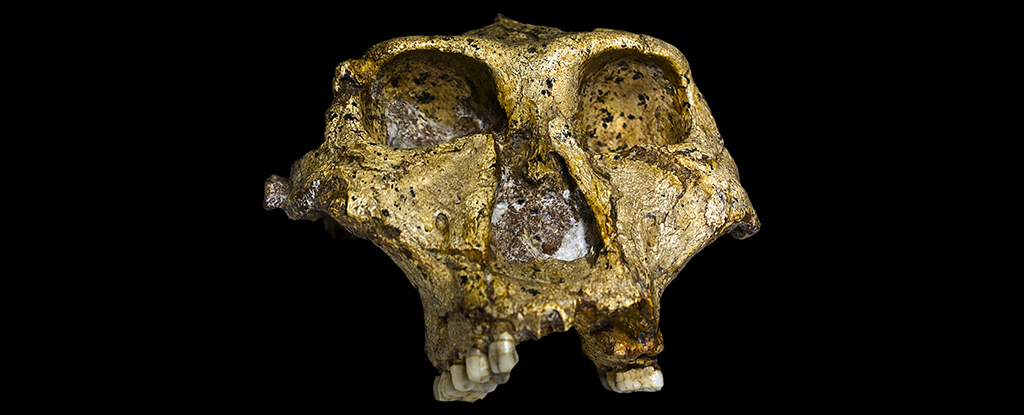
The research will help paleoanthropologists chart out which differences in the fossil record are down to natural variations between men and women (sexual dimorphism), and which signify separate species of hominids altogether.
See the face of 'Ava,' a Bronze Age woman who lived in Scotland 3,800 years ago Live Science - June 30, 2023
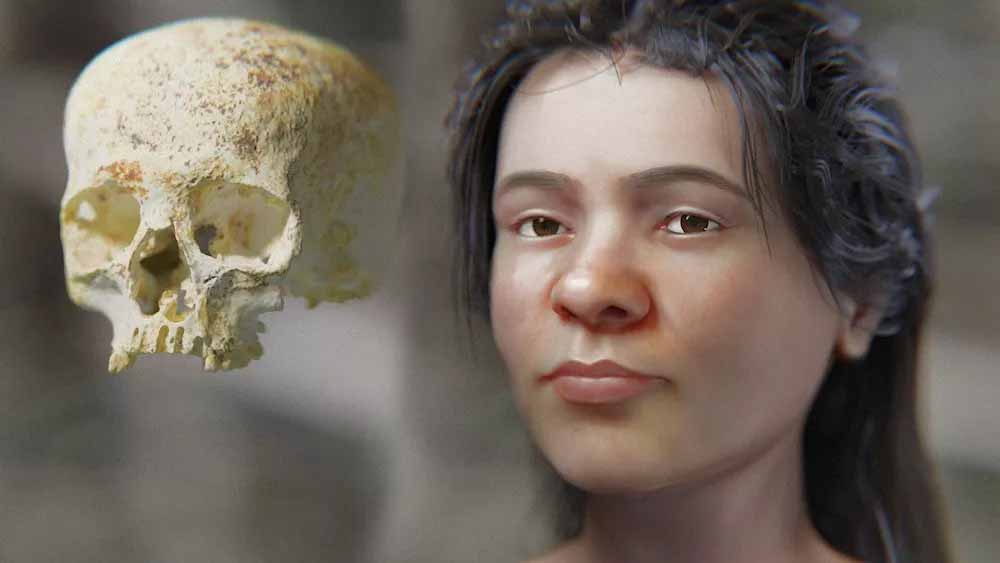
In 1987, Scottish workers accidentally unearthed the burial of a Bronze Age woman during a road construction project. The stone, coffin-like tomb, called a cist, contained the woman's skeletal remains alongside grave goods, including a short-necked pottery beaker, a cow bone fragment and small pieces of flint. The burial in Achavanich, in northern Scotland, came to be known as the Achavanich Beaker Burial. However, not much was known about the woman, whom archaeologists nicknamed "Ava," other than what they determined through anthropological analysis. She was between 18 and 25 years old when she died, and based on measurements of her tibia (shinbone), she was tall, standing approximately 5 feet, 7 inches (1.71 meters)
Cave Contains Earliest Clear Evidence Of Modern Humans In South East Asia IFL Science - June 13, 2023
Oldest Signs of Human Ancestors' Trek to Australia Found in Laotian Cave Science Alert - June 13, 2023
Human fossils found in Tam Pa Ling cave in northern Laos have been dated as 68-86,000 years old. The fossils' finders are confident these came from Homo sapiens, rather than a near relative like Denisovans, making these the oldest reliable evidence of humans in East Asia and answering some big questions about humanity’s great migration out of Africa. However, it seems that these early adventurers have no surviving descendants, suggesting this was probably an expansion that ultimately failed.
Europe's First Hunter-Gatherer People May Not Have Vanished Like We Thought Science Alert - March 1, 2023
Hunter-gatherers took shelter from the ice age in Southwestern Europe, but were replaced on the Italian Peninsula according to two new studies. Modern humans first began to spread across Eurasia approximately 45,000 years ago, arriving from the near east. Previous research claimed these people disappeared when massive ice sheets covered much of Europe around 25,000–19,000 years ago. By comparing the DNA of various ancient humans, we show this was not the case for all hunter-gatherer groups. Our new results show the hunter-gatherers of Central and Southern Europe did disappear during the last ice age. However, their cousins in what is now France and Spain survived, leaving genetic traces still visible in the DNA of Western European peoples nearly 30,000 years later.
500,000-Year-Old Signs of Extinct Human Species Found in Poland Cave Science Alert - February 28, 2023
Prehistoric stone tools found in a cave in Poland 50 years ago were recently identified as some of the oldest ever discovered in the region. The tools from the Tunel Wielki cave in Malopska are between 450,000 and 550,000 years old. This dating may allow scientists to learn more about the humans who made them, and their migration and habitation in Central Europe across prehistory.
Nobody knows who she was, just that she was different: A teenage girl from over 50,000 years ago of such odd uniqueness she appeared to be a 'hybrid' ancestor to modern humans that scientists hadn't seen before Science Alert - November 27, 2022
Only recently, researchers have uncovered evidence she wasn't alone. In a 2019 study analyzing the tangled mess of humanity's prehistory, scientists used artificial intelligence (AI) to identify an unknown human ancestor species that modern humans encountered - and shared dalliances with - on the long trek out of Africa millennia ago.
About 80,000 years ago, the so-called Out of Africa occurred, when part of the human population, which already consisted of modern humans, abandoned the African continent and migrated to other continents, giving rise to all the current populations. As modern humans forged this path into the landmass of Eurasia, they forged some other things too - breeding with ancient and extinct hominids from other species.
Using a statistical technique called Bayesian inference, the researchers found evidence of what they call a "third introgression" – a 'ghost' archaic population that modern humans interbred with during the African exodus. This population is either related to the Neanderthal-Denisova clade or diverged early from the Denisova lineage," the researchers wrote in their paper, meaning that it's possible this third population in humanity's sexual history was possibly a mix themselves of Neanderthals and Denisovans.
7 million years ago, our earliest relatives took their first steps on 2 feet Live Science - August 23, 2022
Sahelanthropus, the oldest representative of humanity, was indeed bipedal PhysOrg - August 23, 2022
1.4 Million-Year-Old Fossil Hints Modern Human Faces Were Present Earlier Than Thought Science Alert - July 18, 2022
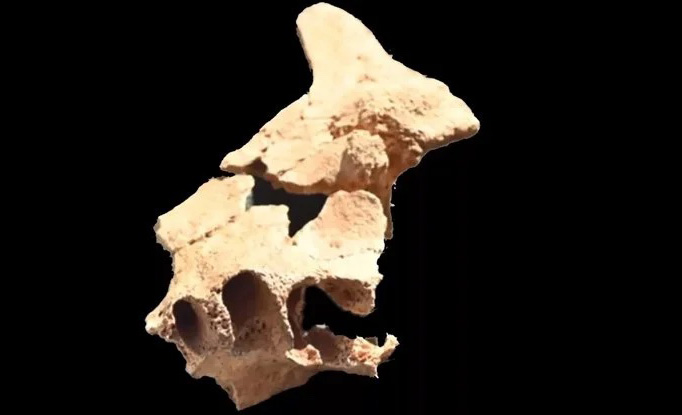
An ancient upper jawbone discovered in Spain reveals the unique facial features of an individual who may be the oldest known ancient human relative in Europe. A team of paleonthropologists unearthed the fossil in June at Sima del Elefante (Spanish for "Pit of the Elephant"), an archeological site in the Atapuerca Mountains near the city of Burgos in northern Spain that's known for its rich fossil record. The fragmented skull is believed to be the oldest of its kind ever found in Europe and includes part of the upper jawbone (maxilla) and a tooth of a hominid who lived approximately 1.4 million years ago, the researchers said in a translated statement.
Footprints in New Mexico are oldest evidence of humans in the Americas BBC - September 23, 2021

Humans reached the Americas at least 7,000 years earlier than previously thought, according to new findings.
The topic of when the continent was first settled from Asia has been controversial for decades.
Many researchers are sceptical of evidence for humans in the North American interior much earlier than 16,000 years ago.
Now, a team working in New Mexico has found scores of human footprints dated to between 23,000 and 21,000 years old.
The discovery could transform views about when the continent was settled. It suggests there could have been great migrations that we know nothing about. And it raises the possibility that these earlier populations could have gone extinct.
The footprints were formed in soft mud on the margins of a shallow lake which now forms part of Alkali Flat in White Sands.
Earliest evidence of human activity found in the Americas at White Sands National Park in New Mexico PhysOrg - September 23, 2021
The footprints were formed in soft mud on the margins of a shallow lake that now forms part of Alkali Flat, a large playa at White Sands. Researchers from the U.S. Geological Survey dated these tracks using radiocarbon dating of seed layers above and below the footprint horizons. The dates range in age and confirm human presence over at least two millennia with the oldest tracks dating from around 23,000 years ago, which corresponds to the height of the last glacial cycle - making them the oldest known human footprints in the Americas.
Did early humans ever really exist or is each iteration another insert in the simulation?
Huge Find of 400,000-Year-Old Bone Tools Challenges Our Understanding of Early Humans Science Alert - September 1, 2021
As far as Lower Paleolithic archaeology goes, this is quite the haul: Experts have uncovered a record 98 elephant-bone tools at a site dating back some 400,000 years. This discovery could change our thinking on how some of the early humans - such as Neanderthals - fashioned implements like these.
A cup of mud that has been buried beneath the floor of a cave for millennia has just yielded up the genome of an ancient human female Science Alert - July 13, 2021
Analysis reveals traces of a woman who lived 25,000 years ago, before the last Ice Age; and, although we don't know much about her, she represents a significant scientific achievement: the feasibility of identifying ancient human populations even when there are no bones to recover.
Meet 'Dragon Man': Newly-identified ancient humans who lived 150,000 years ago and had square eye sockets and a wide mouth may replace Neanderthals as our closest relative, researchers say Daily Mail - June 25, 2021
Experts came to this conclusion after re-analyzing the so-called 'Harbin cranium', which was unearthed back in the 1930s. First thought from Homo heidelbergensis, the team now think the near-perfectly preserved skull instead represents an example of Homo longi - the 'Dragon Man'.
Scientists hail stunning 'Dragon Man' discovery BBC - June 27, 2021
Chinese researchers have unveiled an ancient skull that could belong to a completely new species of human.
The team has claimed it is our closest evolutionary relative among known species of ancient human, such as Neanderthals and Homo erectus.
Nicknamed "Dragon Man", the specimen represents a human group that lived in East Asia at least 146,000 years ago.
It was found at Harbin, north-east China, in 1933, but only came to the attention of scientists more recently. What you have here is a separate branch of humanity that is not on its way to becoming Homo sapiens (our species), but represents a long-separate lineage which evolved in the region for several hundred thousand years and eventually went extinct.
New human species 'Dragon man' may be our closest relative Live Science - June 27, 2021
New prehistoric human unknown to science discovered in Israel Jerusalem Post - June 24, 2021
Hebrew U and Tel Aviv University researchers found remains of a new type of ‘Homo’ who lived in the region some 130,000 years ago. A new type of early human previously not known to scientists has been discovered in Israel, Tel Aviv University and Hebrew University researchers announced Thursday as their extraordinary findings appeared in the prestigious academic journal Science.
Human origins: 'Little Foot' fossil's big journey out of Africa
BBC - March 2, 2021
A priceless fossil was briefly brought to a UK research centre in complete secrecy two years ago, in an operation that had more than a touch of the spy novel about it. The specimen was transported across South Africa with an armed guard, treated like an incognito VIP on an international flight, and then whisked slickly to the Diamond X-ray Light Source just south of Oxford. It was at the British research facility that scientists were able to see some microscopic details in the ancient remains that could help unravel key clues to the origins of modern humans.
Origin of life: The chicken-and-egg problem Science Daily - March 5, 2021
A 4.4 million-year-old skeleton named Ardi could reveal how early humans began to walk upright PhysOrg - February 25, 2021
Analysis of hominin Ardi's hand suggests our ancient ancestors were 'swinging from trees like chimps' until at least 4.4 million years ago Daily Mail - February 25, 2021
Analysis of the hand bones of Ardi reveal she probably lived in the trees. Were found to be different to those of Lucy, who lived one million years later. Thought Lucy walked on two legs and used tools whereas Ardi did not. Believed the million years or so between their lives was a big evolutionary jump which saw the emergence of bipedalism in human ancestors
Three human-like species lived side-by-side in ancient Africa
BBC - April 3, 2020
Two million years ago, three different human-like species were living side-by-side in South Africa, a study shows. The findings underline a growing understanding that the present-day situation, where one human species dominates the globe, may be unusual compared with the evolutionary past. The new evidence comes from efforts to date bones uncovered at a cave complex near Johannesburg. The new work also revealed the earliest known example of Homo erectus, a species thought to be a direct ancestor of modern humans (Homo sapiens).
The three groups of hominins (human-like creatures) belonged to Australopithecus (the group made famous by the "Lucy" fossil from Ethiopia), Paranthropus and Homo - better known as humans.
Smallest Homo erectus cranium in Africa and diverse stone tools found at Gona, Ethiopia PhysOrg - March 6, 2020
An international research team led by scientists from the U.S. and Spain, and including a University of Michigan geologist, has discovered a nearly complete cranium of an early human ancestor, estimated to about 1.5 million years ago, and a partial cranium dated to about 1.26 million years ago, from the Gona study area in Ethiopia's Afar State.
DNA from Stone Age woman obtained 6,000 years on BBC - December 17, 2019
Thanks to the tooth marks she left in ancient "chewing gum", scientists were able to obtain DNA, which they used to decipher her genetic code. This is the first time an entire ancient human genome has been extracted from anything other than human bone, said the researchers.
She likely had dark skin, dark brown hair and blue eyes. The "chewing gum" - actually tar from a tree - is a very valuable source of ancient DNA, especially for time periods where we have no human remains.
Homo erectus: Ancient humans survived longer than we thought BBC - December 18, 2019
Homo erectus evolved around two million years ago, and was the first known human species to walk fully upright.
New dating evidence shows that it survived until just over 100,000 years ago on the Indonesian island of Java - long after it had vanished elsewhere. This means it was still around when our own species was walking the Earth.
Researchers determine age for last known settlement by a direct ancestor to modern humans Science Daily - December 19, 2019
An international team of researchers has determined the age of the last known settlement of the species Homo erectus, one of modern humans' direct ancestors. The site is called Ngandong, on the Indonesian island Java. The team dated animal fragments where Homo erectus remains were found and the surrounding landscape. The team determined the last existence of Homo erectus at Ngandong between 108,000 and 117,000 years ago.
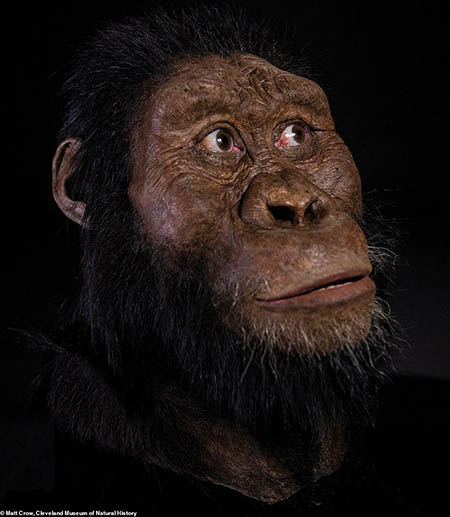
Face of the oldest direct human ancestor revealed: Elusive ancient species that pre-dates Lucy and lived 4.2 million years ago is brought to life by archaeologists for the first time Daily Mail - August 28, 2019
New Fossil Reveals Face of Oldest Known 'Lucy' Relative Live Science - August 28, 2019
Researchers have discovered a remarkably complete 3.8-million-year-old cranium of Australopithecus anamensis at Woranso-Mille in Ethiopia. The 3.8 million-year-old fossil cranium represents a time interval between 4.1 and 3.6 million years ago. Space.com - August 28, 2019
Researchers have discovered a remarkably complete 3.8-million-year-old cranium of Australopithecus anamensis at Woranso-Mille in Ethiopia. The 3.8 million-year-old fossil cranium represents a time interval between 4.1 and 3.6 million years ago. Science Daily - August 28, 2019
'All bets now off' on which ape was humanity's ancestor - Researchers have discovered a nearly complete 3.8-million-year-old skull of an early ape-like human ancestor in Ethiopia. BBC - August 28, 2019
Earliest modern human found outside Africa BBC - July 11, 2019
Researchers have found the earliest example of our species (modern humans) outside Africa. A skull unearthed in Greece has been dated to 210,000 years ago, at a time when Europe was occupied by the Neanderthals. Researchers uncovered two significant fossils in Apidima Cave in Greece in the 1970s. One was very distorted and the other incomplete, however, and it took computed tomography scanning and uranium-series dating to unravel their secrets. The more complete skull appears to be a Neanderthal. But the other shows clear characteristics, such as a rounded back to the skull, diagnostic of modern humans.
DNA from 31,000-year-old milk teeth leads to discovery of new group of ancient Siberians PhysOrg - June 5, 2019
Two children's milk teeth buried deep in a remote archaeological site in north eastern Siberia have revealed a previously unknown group of people lived there during the last Ice Age. The finding was part of a wider study which also discovered 10,000 year-old human remains in another site in Siberia are genetically related to Native Americans - the first time such close genetic links have been discovered outside of the US.
New Species of Early Human Is Even Smaller Than the 'Hobbit' Live Science - April 11, 2019
The ancient bones and teeth of a previously unknown human relative - one that was even smaller than the so-called Hobbit - have been discovered deep in a cave on an island in the Philippines. The newfound species is named Homo luzonensis in honor of Luzon, the island where the mysterious beings lived during the late Pleistocene epoch, more than 50,000 years ago. At less than 4 feet (1.2 meters) tall, H. luzonensis is the second known dwarf human on record, the first being Homo floresiensis, also known as the Hobbit, whose remains were found on the Indonesian island of Flores in 2004. But though H. luzonensis is short like the hobbit, it shares features with a number of other ancient human relatives; it has curved foot and finger bones like Australopithecus (a genus that includes the famous Lucy); premolars that have characteristics similar to those seen in Australopithecus, Homo habilis and Homo erectus; and small molars that look like those of modern humans, or Homo sapiens.
Artificial Intelligence Study of Human Genome Finds Unknown Human Ancestor Smithsonian - February 9, 2019
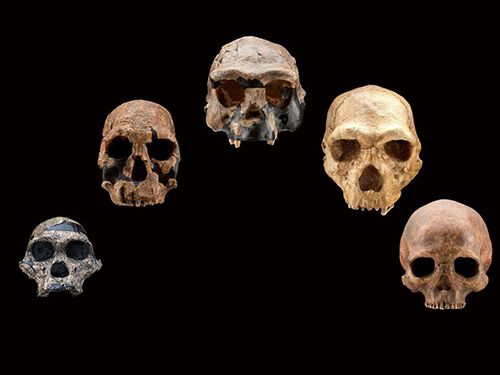
The genetic footprint of a 'ghost population' may match that of a Neanderthal and Denisovan hybrid fossil found in Siberia
Faces Re-Created of Ancient Europeans, Including Neanderthal Woman and Cro-Magnon Man Live Science - January 29, 2019
About 5,600 years ago, a 20-year-old woman was buried with a tiny baby resting on her chest, a sad clue that she likely died in childbirth during the Neolithic. This woman and six other ancient Europeans - including a Cro-Magnon man, a Neanderthal woman and a man-bun-sporting dude from 250 B.C. - are on display at a museum in Brighton, England, now that a forensic artist has re-created their faces.
Researchers suggest 'Little Foot' is an entirely new species of early human PhysOrg - December 10, 2018
Several teams of researchers have announced that the skeletal remains of a hominin believed to have lived approximately 3.67 million years ago represent a new species of early human. The researchers report that the specimen, known as "Little Foot," has characteristics that make it unlike any other known species found in the Sterkfontein caves near Johannesburg. Researchers report that the skeleton was from an elderly woman with an arm bowed due to injury. They also report that the woman would have stood just over four feet tall and had legs that were longer than her arms - a hallmark of bipedalism. She was also vegetarian. The details regarding the skeletal remains have been released prior to publication because other groups have recently been granted access to the remains, and the original team does not want to be scooped.
About 56 million years ago, on an Earth so warm that palm trees graced the Arctic Circle, a mouse-sized primate known as Teilhardina first curled its fingers around a branch. The earliest-known ancestor of modern primates, Teilhardina's close relatives would eventually give rise to today's monkeys, apes and humans. But one of the persistent mysteries about this distant cousin of ours is where it originated.
Teilhardina (ty-hahr-DEE'-nuh) species quickly spread across the forests of Asia, Europe and North America, a range unparalleled by all other primates except humans. But where did its journey begin? New research shows that Teilhardina brandti, a species found in Wyoming, is as old or older than its Asian and European relatives, upending the prevailing hypothesis that Teilhardina first appeared in China.
Cranium of a four-million-year-old hominin shows similarities to that of modern humans Science Daily - June 25, 2018
A cranium of a four-million-year-old fossil, that, in 1995 was described as the oldest evidence of human evolution in South Africa, has shown similarities to that of our own, when scanned through high resolution imaging systems.
People in West Africa still carry 'beneficial' genes from a mystery ancient human ancestor that protects them against tumors Daily Mail - April 3, 2018
Evidence of an unknown species of human ancestor has been found hiding in the DNA of West African people. Experts made the finding by analyzing the human genome, looking for strings of genetic information that were out of place. This revealed an inheritance of markers from an unidentified human-like species, some of which may be of benefit to their descendants - including one which suppresses the development of tumors. Researchers believe an ancient species of hominin, known as Homo heidelbergensis, may be the most likely candidate for the 'ghost' species.
Study shows changes in anatomy would have made walking easier without reducing muscles for climbing in early hominins PhysOrg - April 3, 2018
How and when early human ancestors first began walking upright remains a topic of debate among scientists, and research continues to find the answer. In this new effort, the researchers took another look at conventional ideas suggesting that the first hominins to walk upright likely did so extremely awkwardly, as they retained physical features that would allow them to escape enemies by climbing trees. The researchers suggested that if that were the case, those early hominins would not have survived.
Warts and all: Researchers reconstruct face of Cro-Magnon man PhysOrg - March 30, 2018
Cro-Magnon man had a face covered in lumps including a large one on his forehead likely benign tumors caused by a genetic disease. The skeleton of Cro-Magnon 1, a male Homo sapiens dating back 28,000 years, was discovered in 1868 in the Eyzies cave in France's southwestern Dordogne region.
Changing environment influenced human evolution BBC - March 16, 2018
Humans may have developed advanced social behaviors and trade 100,000 years earlier than previously thought. The results come from an archaeological site in Kenya's rift valley. "Over one million years of time" is represented at the site, according to Rick Potts from the Smithsonian Institution, who was involved in the studies. There are also signs of developments in toolmaking technologies.
The Israeli fossil that could rewrite the history of mankind: Oldest known human remains found outside of Africa suggest modern humans left the continent 100,000 years earlier than thought Live Science - January 25, 2018
Human History Gets Longer: Oldest Fossils Outside of Africa Found Live Science - January 25, 2018
The oldest fossils of modern humans outside Africa have been discovered in Israel, a new study finds. The newly revealed jaw and teeth are estimated to be up to 194,000 years old. This makes these fossils at least 50,000 years older than modern human fossils previously unearthed outside Africa, and closer in age to when recent genetic results suggested modern humans may have first left Africa. These new findings suggest that modern humans may have had more time to interact and interbreed with archaic human lineages outside of Africa than previously thought. The discovery also sheds light on the routes modern humans might have taken while dispersing from Africa.
Little Foot skeleton unveiled in South Africa BBC - December 7, 2017
One of the oldest and most complete skeletons of humankind's ancestors has been unveiled in South Africa. A team spent more than 20 years excavating, cleaning and putting together the skeleton of Little Foot. Its exact age is debated, but South African scientists say the remains are 3.67 million years old. This would mean Little Foot was alive about 500,000 years before Lucy, the famous skeleton of an ancient human relative found in Ethiopia. Both Little Foot and Lucy belong to the same genus - Australopithecus - but they are different species. Scientists believe this shows humankind's ancestors were spread across a far wider area of Africa than had previously thought. It also suggests there were a diverse number of species.
Scientists describe 'enigmatic' species that lived in Utah some 500 million years ago PhysOrg - October 12, 2017
To the untrained eye, it looks like a flower crudely etched into rock - as if a child had scratched a picture of a bloom. But to the late fossil hunter Lloyd Gunther, the tulip shape he unearthed at Antimony Canyon in northern Utah looked like the remnant of an ancient marine animal. Years ago, Gunther collected the rock and later gave it to researchers at the University of Kansas' Biodiversity Institute—just one among thousands of such fossils he donated to the institute over the years. But this find was the only fossilized specimen of a species previously unknown to science - an "obscure" stalked filter feeder.
Intact Spine of Hominin Toddler Revealed for 1st Time Live Science - May 23, 2017
The lonely fossil of a 2.5-year-old early human ancestor has revealed for the first time that the spines of ancient hominins were a lot like ours - and a lot not. New research, published today reveals that Australopithecus afarensis, a human ancestor that lived 3 million years ago, had the same number of lumbar and thoracic vertebrae as humans. But the young hominin, nicknamed "Selam," for the Amharic word for "peace," showed a markedly different transition between her upper and lower back, one that may have given her a boost for bipedal walking.
Europe was the birthplace of mankind, not Africa, scientists find The Telegraph - May 22, 2017
Currently, most experts believe that our human lineage split from apes around seven million years ago in central Africa, where hominids remained for the next five million years before venturing further afield. But two fossils of an ape-like creature which had human-like teeth have been found in Bulgaria and Greece, dating to 7.2 million years ago. The discovery of the creature, named Graecopithecus freybergi, and nicknamed ‘El Graeco' by scientists, proves our ancestors were already starting to evolve in Europe 200,000 years before the earliest African hominid. An international team of researchers say the findings entirely change the beginning of human history and place the last common ancestor of both chimpanzees and humans - the so-called Missing Link - in the Mediterranean region.
Humans were in America 115,000 years earlier than thought: Dramatic discovery that mastodon bones were butchered with Stone Age tools has forced scientists to stunning new conclusion Daily Mail - April 26, 2017
A controversial find could rewrite the history of humans in North America. Archaeologists claim to have found evidence an unknown species of human was living on the continent as early as 130,000 years ago - 115,000 years earlier than previously thought. Researchers discovered the butchered remains of an enormous mastodon in San Diego, with evidence of chips and fractures made by early humans - but they admit they don't know if they were Homo sapiens, Homo erectus, Neanderthals, or something else.
Mastodon discovery shakes up understanding of early humans in the New World Science Daily - April 26, 2017
Broken bones and rocks yield evidence that pushes back the record of early humans in North America by more than 100,000 years
Homo erectus walked as we do Science Daily - July 12, 2016
1.5-million-year-old footprints provide window to the life of Homo erectus. Researchers have recently discovered multiple assemblages of Homo erectus footprints in northern Kenya that provide unique opportunities to understand locomotor patterns and group structure through a form of data that directly records these dynamic behavior. Using novel analytical techniques, they have demonstrated that these H. erectus footprints preserve evidence of a modern human style of walking and a group structure that is consistent with human-like social behavior. Based on experimentally derived estimates of body mass from the Ileret hominin tracks, the researchers have also inferred the sexes of the multiple individuals who walked across footprint surfaces and, for the two most expansive excavated surfaces, developed hypotheses regarding the structure of these H. erectus groups. At each of these sites there is evidence of several adult males, implying some level of tolerance and possibly cooperation between them. Cooperation between males underlies many of the social behaviours that distinguish modern humans from other primates. "It isn't shocking that we find evidence of mutual tolerance and perhaps cooperation between males in a hominin that lived 1.5 million years ago, especially Homo erectus, but this is our first chance to see what appears to be a direct glimpse of this behavioural dynamic in deep time," says Hatala.
'Cousin of Lucy' Fossils Reveal Human Relative Lived in East Africa Live Science - March 25, 2016
Fossils belonging to an ancient human relative that were discovered on the banks of a Kenyan river suggest that hominids lived farther east than previously thought. Researchers found the fossils - a forearm bone and teeth belonging to an adult Australopithecus afarensis male and two infants - along the Kantis River in Ongata-Rongai, a settlement just outside the capital city of Nairobi. The fossil find represents the first Australopithecus member found east of the Rift Valley, a ridge that runs north to south through Kenya and other east African countries, the researchers said. Remains of Australopithecus bahrelghazali, another human relative in the same genus, were found in Chad (west of the Rift Valley), suggesting that members of this genus lived in central Africa.
Fossil analysis pushes back human split from other primates by two million years Science Daily - February 17, 2016
A common ancestor of apes and humans, Chororapithecus abyssinicus, evolved in Africa, not Eurasia, two million years earlier than previously thought, a new paper suggests. New research supports early divergence: 10 million years ago for the human-gorilla split and 8 million years ago for our split from chimpanzees
South Africa's Sterkfontein Caves produce two new hominin fossils Science Daily - February 13, 2016
Two new hominin fossils have been found in a previously uninvestigated chamber in the Sterkfontein Caves, just North West of Johannesburg in South Africa. The two new specimens, a finger bone and a molar, are part of a set of four specimens, which seem to be from early hominins that can be associated with early stone tool-bearing sediments that entered the cave more than two million years ago. The specimens are exciting not only because they are associated with early stone tools, but also because they possess a mixture of intriguing features that raise many more questions than they give answers.
Mysterious Humanlike Species May Have Lived Alongside 'Lucy' BBC - May 28, 2015
A newfound humanlike species may be another contender for the ancestor of the human lineage, researchers say. This ancient relative of humanity coexisted alongside the famous Lucy about 3.4 million years ago, revealing that a diversity of such humanlike species once lived together, scientists added. The oldest known member of the human lineage, genus Homo, dates back to about 2.8 million years ago. Before humans evolved, researchers had long thought there was little or no diversity among the hominins, which include humans and related species dating after the evolutionary split from the chimpanzees.
New Human Ancestor Species Discovered Live Science - May 28, 2015
Bones from a possible new humanlike species have been discovered in the central Afar region of Ethiopia. The species lived between 3.3 million and 3.5 million years ago alongside the famous Lucy, a member of Australopithecus afarensis, and suggest several homins coexisted at the time, during the Middle Pliocene. Here are images of the fossils discovered in Ethiopia. The best-known hominin that lived before the evolution of humans was Australopithecus afarensis from eastern Africa, which lived between 2.9 million and 3.8 million years ago, and which included the famous Lucy. Scientists have long argued that later hominins might have evolved from this species.
Agriculture, declining mobility drove humans' shift to lighter bones Science Daily - May 20, 2015
Modern lifestyles have famously made humans heavier, but, in one particular way, noticeably lighter weight than our hunter-gatherer ancestors: in the bones. Now a new study of the bones of hundreds of humans who lived during the past 33,000 years in Europe finds the rise of agriculture and a corresponding fall in mobility drove the change, rather than urbanization, nutrition or other factors.
Two ancient human fossils from Laos reveal early human diversity Science Daily - April 8, 2015
An ancient human skull and a jawbone found a few meters away in a cave in northern Laos add to the evidence that early modern humans were physically quite diverse. The skull, found in 2009 in a cave known as Tam Pa Ling in the Annamite Mountains of present-day Lao is the oldest modern human fossil found in Southeast Asia. Its discovery pushed back the date of modern human migration through the region by as much as 20,000 years. It revealed that early humans who migrated to the islands and coasts of Southeast Asia after migrating out of Africa also traveled inland much earlier than previously thought, some 46,000 to 63,000 years ago. The jaw was discovered in late 2010 and is roughly the same age as the skull. Unlike the skull, it has both modern and archaic human trait.
Earliest humans had diverse range of body types, just as we do today Science Daily - March 28, 2015
New research harnessing fragmentary fossils suggests our genus has come in different shapes and sizes since its origins over two million years ago, and adds weight to the idea that humans began to colonize Eurasia while still small and lightweight. One of the dominant theories of our evolution is that our genus, Homo, evolved from small-bodied early humans to become the taller, heavier and longer legged Homo erectus that was able to migrate beyond Africa and colonise Eurasia. While we know that small-bodied Homo erectus -- averaging less than five foot (152cm) and under 50kg -- were living in Georgia in southern Europe by 1.77 million years ago, the timing and geographic origin of the larger body size that we associate with modern humans has, until now, remained unresolved.
Discovery of 2.8-million-year-old jaw sheds light on early humans Science Daily - March 4, 2015
For decades, scientists have been searching for African fossils documenting the earliest phases of the Homo lineage, but specimens recovered from the critical time interval between 3 and 2.5 million years ago have been frustratingly few and often poorly preserved. However, a fossil lower jaw found in the Ledi-Geraru research area, Afar Regional State, Ethiopia, pushes back evidence for the human genus - Homo - to 2.8 million years ago.
Earliest known fossil of the genus Homo dates to 2.8 to 2.75 million years ago Science Daily - March 4, 2015
The earliest known record of the genus Homo -- the human genus -- represented by a lower jaw with teeth, recently found in the Afar region of Ethiopia, dates to between 2.8 and 2.75 million years ago, according to an international team of geoscientists and anthropologists. They also dated other fossils to between 2.84 and 2.58 million years ago, which helped reconstruct the environment in which the individual lived.
Fossil found by fisherman may reveal new type of ancient human CNN - January 29, 2015
A fossilized human jawbone discovered by a Taiwanese fisherman, sold to an antique shop, then recovered by researchers may reveal a new kind of prehistoric man. The unlikely find could be nearly 200,000 years old and suggests a fourth type of ancient human who lived in Asia long before Homo sapiens ever came to be. Three other known archaic Asian hominids include Homo erectus, found in Java and China; the shorter Homo floresiensis from Indonesia; and Neanderthals in the Russian Altai mountains. Scientists believe that human jaws and teeth became smaller as they evolved. But unlike other fossils of the time, the newly discovered jawbone is thick with large molars, suggesting the existence of a different group.
DNA yields secrets of human pioneer BBC - October 22, 2014
>
DNA analysis of a 45,000-year-old human has helped scientists pinpoint when our ancestors interbred with Neanderthals. The genome sequence from a thigh bone found in Siberia shows the first episode of mixing occurred between 50,000 and 60,000 years ago. The male hunter is one of the earliest modern humans discovered in Eurasia. The study in Nature journal also supports the finding that our species emerged from Africa some 60,000 years ago, before spreading around the world. The analysis raises the possibility that the human line first emerged millions of years earlier than current estimates.
Neanderthals and Humans First Mated 50,000 Years Ago, DNA Reveals Live Science - October 22, 2014
The DNA from the 45,000-year-old bone of a man from Siberia is helping to pinpoint when modern humans and Neanderthals first interbred, researchers say. Although modern humans are the only surviving human lineage, others once lived on Earth. The closest extinct relatives of modern humans were the Neanderthals, who lived in Europe and Asiauntil they went extinct about 40,000 years ago. Recent findings revealed that Neanderthals interbred with ancestors of modern humans when modern humans began spreading out of Africa - 1.5 to 2.1 percent of the DNA of anyone living outside Africa today is Neanderthal in origin.
Taung Child's skull and brain not human-like in expansion PhysOrg - August 25, 2014
The Taung Child, South Africa's premier hominin discovered 90 years ago, never ceases to transform and evolve the search for our collective origins. By subjecting the skull of the first australopith discovered to the latest technologies in the Wits University Microfocus X-ray Computed Tomography (CT) facility, researchers are now casting doubt on theories that Australopithecus africanus shows the same cranial adaptations found in modern human infants and toddlers – in effect disproving current support for the idea that this early hominin shows infant brain development in the prefrontal region similar to that of modern humans.
Interbreeding Common? Ancient Human Had Neanderthal-Like Ear Live Science - July 7, 2014
The remains of an ancient human in China not thought to be Neanderthal has an inner ear much like that of humans' closest extinct relatives, according to a new study. These new findings could be evidence of interbreeding between Neanderthals and other species of archaic humans in China; however, the researchers say human evolution could be more complicated than is often thought, and the implications of the new discovery remain unclear. Although modern humans are the only living members of the human family tree, a number of other human lineages once lived alongside the ancestors of modern humans. These so-called archaic humans included Neanderthals, the closest extinct relatives of modern humans, who lived in Eurasia roughly between 200,000 and 30,000 years ago.
New stratigraphic research makes Little Foot the oldest complete Australopithecus PhysOrg - March 14, 2014
After 13 years of meticulous excavation of the nearly complete skeleton of the Australopithecus fossil named Little Foot, South African and French scientists have now convincingly shown that it is probably around 3 million years old. Thus at Sterkfontein, there existed two species of ape-man, Australopithecus africanus (for example, Mrs Ples) and Australopithecus prometheus, many specimens of which have been identified by Clarke from two deposits at Sterkfontein.
Hunter-gatherer European had blue eyes and dark skin BBC - January 27, 2014
Scientists have shed light on what ancient Europeans looked like. Genetic tests reveal that a hunter-gatherer who lived 7,000 years ago had the unusual combination of dark skin and hair and blue eyes. It has surprised scientists, who thought that the early inhabitants of Europe were fair. Two hunter-gatherer skeletons were discovered in a cave in the mountains of north-west Spain in 2006. The cool, dark conditions meant the remains (called La Brana 1 and 2) were remarkably well preserved. Scientists were able to extract DNA from a tooth of one of the ancient men and sequence his genome. The team found that the early European was most closely genetically related to people in Sweden and Finland. But while his eyes were blue, his genes reveal that his hair was black or brown and his skin was dark. This was a result that was unexpected.
Spanish hunter-gatherer had blue eyes and dark skin PhysOrg - January 27, 2014
La Brana 1, name used to baptize a 7,000 years old individual from the Mesolithic Period, whose remains were recovered at La Brana-Arintero site in Valdelugueros (Leon, Spain) had blue eyes and dark skin. The Mesolithic, a period that lasted from 10,000 to 5,000 years ago (between the Paleolithic and the Neolithic), ends with the advent of agriculture and livestock farming, coming from the Middle-East. The arrival of the Neolithic, with a carbohydrate-based diet and new pathogens transmitted by domesticated animals, entailed metabolic and immunological challenges that were reflected in genetic adaptations of post-Mesolithic populations. Among these is the ability to digest lactose, which La Brana individual could not do.
Biology of early human relative uncovered PhysOrg - January 22, 2014
The partial skeleton of an ancient hominin has been uncovered for the first time in Tanzania, giving a new insight into the species' biology, say scientists. The accidental discovery was made last year when, during an archaeological excavation, scientists uncovered pieces of skull, teeth and limb bones. The bones belong to an early hominin, called Paranthropus boisei, which lived 1.34 million years ago in Eastern Africa and shares an ancestor with humans. Archaeologists had only ever discovered parts of skulls belonging to this species, so until now had no real evidence of its size or how it was adapted to its environment.
Ancient Humans Had Sex with Mystery Relatives, Study Suggests Live Science - December 2, 2013
A new, improved sequencing of ancient human relative genomes reveals that Homo sapiens didn't only have sex with Neanderthals and a little-understood line of humans called Denisovans. A fourth, mystery lineage of humans was in the mix, too.
Blow to multiple human species idea BBC - October 17, 2013
The idea that there were several different human species walking the Earth two million years ago has been dealt a blow. Instead, scientists say early human fossils found in Africa and Eurasia may have been part of the same species.
Dating of Beads Sets New Timeline for Early Humans Science Daily - September 14, 2013
An international team of researchers led by Oxford University have new dating evidence indicating when the earliest fully modern humans arrived in the Near East, the region known as the Middle East today. They have obtained the radiocarbon dates of marine shell beads found at Ksar Akil, a key archaeological site in Lebanon, which allowed them to calculate that the oldest human fossil from the same sequence of archaeological layers is 42,400-41,700 years old. This is significant because the age of the earliest fossils, directly and indirectly dated, of modern humans found in Europe is roughly similar. This latest discovery throws up intriguing new possibilities about the routes taken by the earliest modern humans out of Africa.
Early Humans Lived in China 1.7 Million Years Ago Live Science - August 15, 2013
An extinct species of tool-making humans apparently occupied a vast area in China as early as 1.7 million years ago, researchers say. The human lineage evolved in Africa, with now-extinct species of humans dispersing away from their origin continent more than a million years before modern humans did. Scientists would like to learn more about when and where humans went to better understand what drove human evolution. Researchers investigated the Nihewan Basin, which lies in a mountainous region about 90 miles (150 kilometers) west of Beijing. It holds more than 60 sites from the Stone Age, with thousands of stone tools found there since 1972 - relatively simple types, such as stone flakes altogether known as the Oldowan. Researchers suspect these artifacts belonged to Homo erectus, thought to be ancestral to Homo sapiens.
How 2-Million-Year-Old Ancestor Moved: Sediba's Ribcage and Feet Were Not Suitable for Running Science Daily - April 12, 2013
Researchers at Wits University in South Africa, including Peter Schmid from the University of Zurich, have described the anatomy of a single early hominin in six new studies. Australopithecus sediba was discovered near Johannesburg in 2008. The studies in Science demonstrate how our 2-million-year-old ancestor walked, chewed and moved.
Humanity's Closest Ancestor Was Pigeon-Toed, Research Reveals Live Science - April 11, 2013
The most complete investigation of the anatomy of what may be the immediate ancestor of the human lineage is now shedding light on secrets about how it might have behaved, researchers say. For instance, the human ancestors may have moved in an entirely new way, with a somewhat pigeon-toed gait with a twisty trunk, the researchers added. The first specimens of the extinct species Australopithecus sediba were accidentally discovered by the 9-year-old son of a scientist in 2008, in an area in South Africa named the Cradle of Humankind, one of the richest fossil sites in Africa. Australopithecus means "southern ape," while sediba means "fountain" in Sotho, one of the 11 official languages of South Africa, due to how scientists hint the human lineage might spring from this species.
Early Human Ancestor Surprisingly Smart Live Science - March 13, 2013
Early human ancestors needed high-level intelligence to use fire, new research suggests. The study argues that fire use requires long-term planning, group cooperation and inhibition. In combination with evidence for early fire use, the study suggests that the early human ancestor Homo erectus may have been smarter than previously thought.
Fossil human traces line to modern Asians BBC - January 22, 2013
Researchers have been able to trace a line between some of the earliest modern humans to settle in China and people living in the region today. The evidence comes from DNA extracted from a 40,000-year-old leg bone found in a cave near Beijing. Results show that the person it belonged to was related to the ancestors of present-day Asians and Native Americans.
Early human ancestors had more variable diet: Dietary preferences of 3 groups of hominins reconstructed PhysOrg - August 8, 2012
The latest research sheds more light on the diet and home ranges of early hominins belonging to three different genera, notably Australopithecus, Paranthropus and Homo - that were discovered at sites such as Sterkfontein, Swartkrans and Kromdraai in the Cradle of Humankind, about 50 kilometres from Johannesburg. Australopithecus existed before the other two genera evolved about 2 million years ago.
Many human 'prototypes' coexisted in Africa BBC - August 9, 2012
Fossils from Northern Kenya show that a new species of human lived two million years ago, researchers say. The discoveries suggests that at least three distinct species of humans co-existed in Africa. The research adds to a growing body of evidence that runs counter to the popular perception that there was a linear evolution from early primates to modern humans.
New Flat-Faced Human Species Possibly Discovered Live Science - August 8, 2012
New fossils from the dawn of the human lineage suggest our ancestors may have lived alongside a diversity of extinct human species, researchers say. Although modern humans, Homo sapiens, are the only human species alive today, the world has seen a number of human species come and go. Other members perhaps include the recently discovered "hobbit" Homo floresiensis. The human lineage, Homo, evolved in Africa about 2.5 million years ago, coinciding with the first evidence of stone tools. For the first half of the last century, conventional wisdom was that the most primitive member of our lineage was Homo erectus, the direct ancestor of our species. However, just over 50 years ago, scientists discovered an even more primitive species of Homo at Olduvai Gorge in Tanzania they dubbed Homo habilis, which had a smaller brain and a more apelike skeleton.
New Kenyan fossils shed light on early human evolution PhysOrg - August 8, 2012
Exciting new fossils discovered east of Lake Turkana confirm that there were two additional species of our genus - Homo - living alongside our direct human ancestral species, Homo erectus, almost two million years ago. The finds, announced in the prestigious scientific journal Nature on August 9, include a face, a remarkably complete lower jaw, and part of a second lower jaw.
'Earliest' evidence of modern human culture found BBC - August1, 2012
The earliest unambiguous evidence for modern human behavior has been discovered by an international team of researchers in a South African cave. The finds provide early evidence for the origin of modern human behavior 44,000 years ago, over 20,000 years before other findings. The artifacts are near identical to modern-day tools of the indigenous African San bush people.
Oldest Poison Pushes Back Ancient Civilization 20,000 Years Live Science - July 30, 2012
The late Stone Age may have had an earlier start in Africa than previously thought - by some 20,000 years. new analysis of artifacts from a cave in South Africa reveals that the residents were carving bone tools, using pigments, making beads and even using poison 44,000 years ago. These sorts of artifacts had previously been linked to the San culture, which was thought to have emerged around 20,000 years ago. "Our research proves that the Later Stone Age emerged in South Africa far earlier than has been believed and occurred at about the same time as the arrival of modern humans in Europe," study researcher Paola Villa, a curator at the University of Colorado Museum of Natural History, said in a statement.
Later Stone Age Got Earlier Start in South Africa Than Thought Science Daily - July 30, 2012
The Later Stone Age emerged in South Africa more than 20,000 years earlier than previously believed - about the same time humans were migrating from Africa to the European continent, says a new international study led by the University of Colorado Boulder. The study shows the onset of the Later Stone Age in South Africa likely began some 44,000 to 42,000 years ago, said Paola Villa, a curator at the University of Colorado Museum of Natural History and lead study author. The new dates are based on the use of precisely calibrated radiocarbon dates linked to organic artifacts found at Border Cave in the Lebombo Mountains on the border of South Africa and Swaziland containing evidence of hominid occupation going back 200,000 years.
Human Ancestor Fossils Hidden in Plain Sight in Lab Rock Live Science - July 13, 2012
Two years ago, scientists announced they had discovered partial skeletons from a new species of human ancestor in a South African cave. Now, more remains have turned up in a large rock about 3.3 feet (1 meter) in diameter hiding in plain sight in a laboratory at the University of Witwatersrand in South Africa, the university announced today (June 12).
Mystery human fossils put spotlight on China PhysOrg - March 14, 2012
Fossils from two caves in south-west China have revealed a previously unknown Stone Age people and give a rare glimpse of a recent stage of human evolution with startling implications for the early peopling of Asia.
Human fossils hint at new species BBC - March 14, 2012
The remains of what may be a previously unknown human species have been identified in southern China. The bones, which represent at least five individuals, have been dated to between 11,500 and 14,500 years ago. But scientists are calling them simply the Red Deer Cave people, after one of the sites where they were unearthed
Early humans won at running; Neanderthals won at walking PhysOrg - February 7, 2011
New research has compared the performance of the heels of modern-day distance runners to the heels of Neanderthals and ancient Homo sapiens. The results show the Neanderthals' heels were taller than those of modern humans and Homo sapiens, and more adapted to walking than running over long distances, while those of Homo sapiens were more adapted to endurance running.
'Mitochondrial Eve': Mother of All Humans Lived 200,000 Years Ago Science Daily - August 18, 2010
The most robust statistical examination to date of our species' genetic links to "mitochondrial Eve" -- the maternal ancestor of all living humans -- confirms that she lived about 200,000 years ago. The Rice University study was based on a side-by-side comparison of 10 human genetic models that each aim to determine when Eve lived using a very different set of assumptions about the way humans migrated, expanded and spread across Earth. The quest to date mitochondrial Eve (mtEve) is an example of the way scientists probe the genetic past to learn more about mutation, selection and other genetic processes that play key roles in disease.
ANCIENT AND LOST CIVILIZATIONS